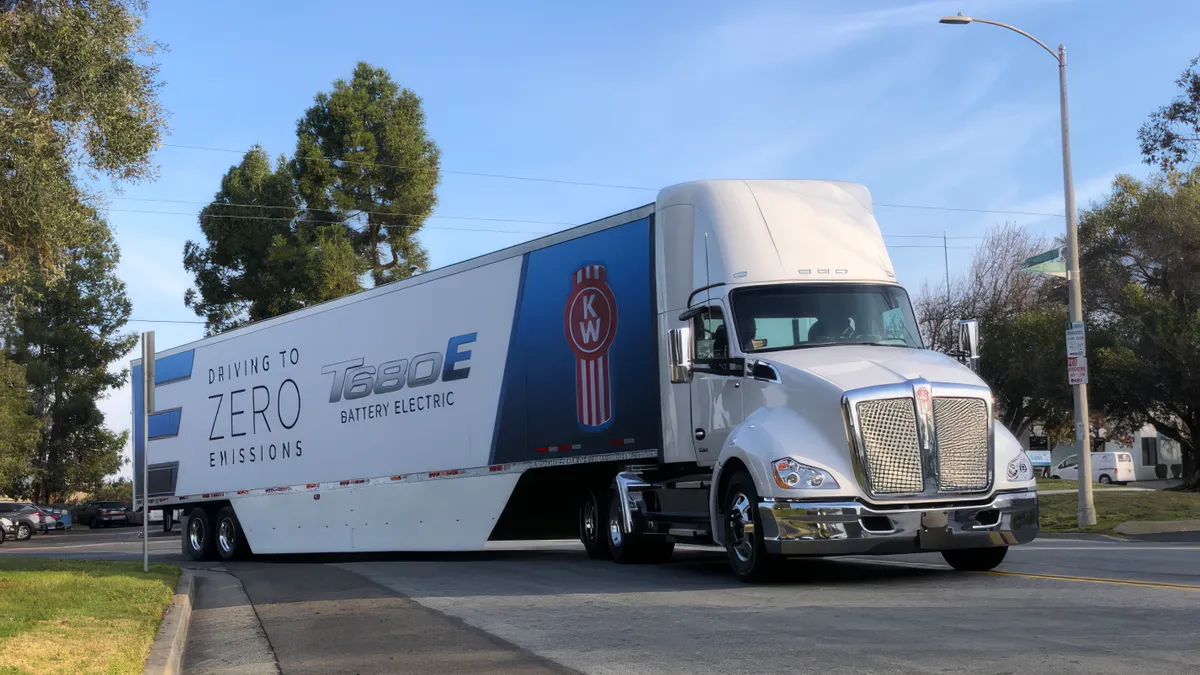California wants to usher in an era of zero-emissions trucks and buses. The state’s Advanced Clean Fleets regulation requires fleets to adopt an increasing percentage of zero-emission vehicles, and the companion Advanced Clean Trucks rule requires manufacturers to sell an increasing percentage of zero-emission heavy-duty trucks beginning in model year 2024. These efforts, however, face legal pushback from a bevy of opponents, from trucking groups to a coalition of states.
According to the California Air Resources Board, Colorado plans to follow the Golden State’s ACT regulation, and other states may follow. But last year, 19 states filed a suit challenging the Environmental Protection Agency’s waiver allowing California to set separate emissions and pollution standards. The plaintiffs voiced concern that California’s rule would become a de facto national standard, forcing vehicle manufacturers to run two separate production lines.
But for one California fleet owner, his decision to go electric has brought surprising benefits. “We've seen many customers reach out to us with interest [in] moving their goods with zero emissions,” said Rudy Diaz, founder and CEO of Hight Logistics, which serves the ports of Los Angeles and Long Beach.
Founded in 2011, Hight Logistics has about 60 trucks, of which 20% are electric, Diaz said. Hight moves containers from the ports to warehouses throughout Southern California and beyond, but most runs are between 150 and 230 miles, he told Smart Cities Dive. “We're able to service 90% of our customers with these electric vehicles because most of our customers are located within, I would say, an 80-mile radius from the ports.”
Anyone who drives in Southern California is familiar with the notorious I-710 freeway, which carries high volumes of heavy-duty diesel trucks from the ports to inland industries, subjecting the communities along the corridor to harmful pollution. The corridor accounts for 20% of all particulate matter emissions in Southern California and sees asthma hospitalization rates 30% higher than the county average.
Historic policy and planning decisions led to the disproportionate dangers these communities face now. Today, 77% of residents in the area are Hispanic or Latin American. The median household income is almost 36% below the county average, and unemployment rates are higher, according to the Long Beach-East LA Corridor Mobility Investment Plan created by LA Metro.
Niki Okuk grew up in Los Angeles, surrounded by family members who work in trucking and logistics. Today she is the deputy director of trucks and off-road at Calstart, a national clean transportation advocacy group. “We know firsthand how these chemicals and [nitrous oxide] emissions impact us directly, because we consider ourselves sort of a fence-line community here,” she said.
Calstart administers California’s Hybrid and Zero-Emission Truck and Bus Voucher Incentive Project, which provides point-of-sale discounts to help businesses acquire clean vehicles. Okuk said that the program can cover up to 90% of the cost of an electric vehicle for small fleets, who may otherwise have difficulty funding such a purchase. “The vast majority of the trucking population are small businesses, and they still need a lot of support,” Okuk said. “We want to make what seems like complex technology very accessible and then we want to have the financial support to get them over that initial hurdle.”
Cost was just one of the challenges Diaz faced when he decided to invest in heavy-duty electric trucks. “Where do we even begin?” he said. He had to find the manufacturers that made these vehicles, figure out where and how to charge the trucks and whether they had enough electric power coming into their facility to meet charging demands, Diaz explained. He began about two and a half years ago. “It took about a year to build out that infrastructure and have it operational and running,” he said.
For other truckers and fleet owners looking to comply with California’s mandate to move to zero-emission vehicles, Diaz advised: “Take the first step. You got to start now. You got to start now because it's a long process.” However, he pointed out that drivers get to enjoy a newer, cleaner, quieter truck. And when they drive to the ports, Diaz said, “They are no longer emitting emissions there.”












